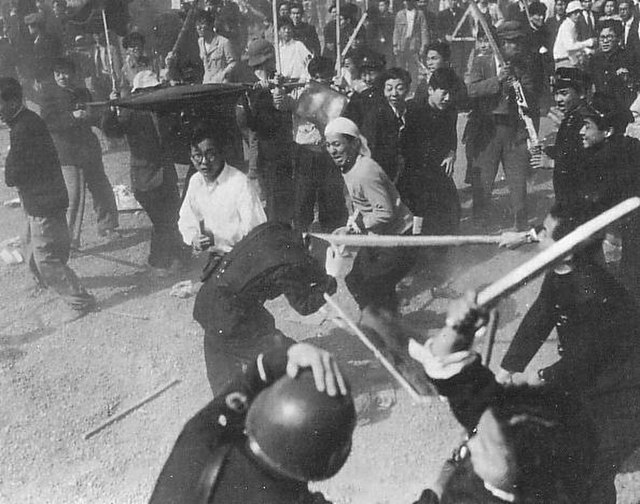Security Treaty between the United States and Japan
The Security Treaty between the United States and Japan was a treaty signed on 8 September 1951 in San Francisco, California by representatives of the United States and Japan, in conjunction with the Treaty of San Francisco that ended World War II in Asia. The treaty was imposed on Japan by the United States as a condition for ending the Occupation of Japan and restoring Japan's sovereignty as a nation. It had the effect of establishing a long-lasting military alliance between the United States and Japan.
Security Treaty between the United States and Japan
"Bloody May Day": Protesters battle with police in Tokyo on May 1, 1952, in opposition to the continuation of U.S. military bases under the new Security Treaty.
The Treaty of San Francisco , also called the Treaty of Peace with Japan , re-established peaceful relations between Japan and the Allied Powers on behalf of the United Nations by ending the legal state of war and providing for redress for hostile actions up to and including World War II. It was signed by 49 nations on 8 September 1951, in San Francisco, California, at the War Memorial Opera House. Italy and China were not invited, the latter due to disagreements on whether the Republic of China or the People's Republic of China represented the Chinese people. Korea was also not invited due to a similar disagreement on whether South Korea or North Korea represented the Korean people.
Shigeru Yoshida, Prime Minister of Japan signing the San Francisco Peace Treaty on September 8, 1951 at the War Memorial Opera House in San Francisco, California
U.S. Secretary of State Dean Acheson signing the Treaty.
Memorial for Treaty of San Francisco in Shimomaruko, Ōta ward, Tokyo





